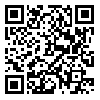1. 1- Korayem MH, Hoshiar AK, Nazarahari M. A hybrid co-evolutionary genetic algorithm for multiple nanoparticle assembly task path planning. The International Journal of Advanced Manufacturing Technology. 2016;87(9-12):3527-3543. [
Link] [
DOI:10.1007/s00170-016-8683-4]
2. Korayem MH, Hefzabad RN, Homayooni A, Aslani H. Molecular dynamics simulation of nanomanipulation based on AFM in liquid ambient. Applied Physics A. 2016;122:977. [
Link] [
DOI:10.1007/s00339-016-0504-y]
3. Korayem AH, Mashhadian A, Korayem MH. Vibration analysis of different AFM cantilever with a piezoelectric layer in the vicinity of rough surfaces. European Journal of Mechanics A Solids. 2017;65:313-323. [
Link] [
DOI:10.1016/j.euromechsol.2017.05.003]
4. Wu Y, Fang Y, Ren X. A high-efficiency Kalman filtering imaging mode for an atomic force microscopy with hysteresis modeling and compensation. Mechatronics. 2018;50:69-77. [
Link] [
DOI:10.1016/j.mechatronics.2018.01.010]
5. Shen Y, Ahmad MR, Nakajima M, Kojima S, Homma M, Fukuda T. Evaluation of the single yeast cell's adhesion to ITO substrates with various surface energies via ESEM nanorobotic manipulation system. IEEE Transactions on NanoBioscience. 2011;10(4):217-224. [
Link] [
DOI:10.1109/TNB.2011.2177099]
6. Korayem MH, Mahmoodi Z, Mohammadi M. 3D investigation of dynamic behavior and sensitivity analysis of the parameters of spherical biological particles in the first phase of AFM-based manipulations with the consideration of humidity effect. Journal of Theoretical Biology. 2018;436:105-119. [
Link] [
DOI:10.1016/j.jtbi.2017.09.016]
7. Rana MS, Pota HR, Petersen IR. Performance of sinusoidal scanning with MPC in AFM imaging. IEEE ASME Transactions on Mechatronics. 2015;20(1):73-83. [
Link] [
DOI:10.1109/TMECH.2013.2295112]
8. Korayem MH, Homayooni A, Hefzabad RN. Non-classic multiscale modeling of manipulation based on AFM, in aqueous and humid ambient. Surface Science. 2018;671:27-35. [
Link] [
DOI:10.1016/j.susc.2018.01.011]
9. Shen Y, Nakajima M, Ahmad MR, Kojima S, Homma M, Fukuda T. In-situ single cell manipulation via nanorobotic manipulation system inside E-SEM. International Symposium on Micro-NanoMechatronics and Human Science, 9-11 Nov, 2009, Nagoya, Japan. Piscataway: IEEE; 2009. [
Link] [
DOI:10.1109/MHS.2009.5351892]
10. Resch R, Lewis D, Meltzer S, Montoya N, E Koel B, Madhukar A, et al. Manipulation of gold nanoparticles in liquid environments using scanning force microscopy. Ultramicroscopy. 2000;82(1-4):135-139. [
Link] [
DOI:10.1016/S0304-3991(99)00152-7]
11. Habibullah H, Pota HR, Petersen IR, Rana MS. Tracking of triangular reference signals using LQG controllers for lateral positioning of an AFM scanner stage. IEEE ASME Transactions on Mechatronics. 2014;19(4):1105-1114. [
Link] [
DOI:10.1109/TMECH.2013.2270560]
12. Korayem MH, Taheri M. Modeling of various contact theories for the manipulation of different biological micro/nanoparticles based on AFM. Journal of Nanoparticle Research. 2014;16:2156. [
Link] [
DOI:10.1007/s11051-013-2156-6]
13. Sitti M. Survey of nanomanipulation systems. Proceedings of 1st IEEE Conference on Nanotechnology, 30-30 Oct, 2001, Maui, HI, USA. Piscataway: IEEE; 2001. [
Link] [
DOI:10.1109/NANO.2001.966397]
14. Mahboobi SH, Meghdari A, Jalili N, Amiri F. Molecular dynamics simulation of manipulation of metallic nanoclusters on double-layer substrates. Physica E Low-dimensional Systems and Nanostructures. 2010;42(9):2364-2374. [
Link] [
DOI:10.1016/j.physe.2010.05.018]
15. Zakeri M, Faraji J, Kharazmi M. Multipoint contact modeling of nanoparticle manipulation on rough surface. Journal of Nanoparticle Research. 2016;18:374. [
Link] [
DOI:10.1007/s11051-016-3639-z]
16. Kahrobaiyan MH, Asghari M, Rahaeifard M, Ahmadian MT. Investigation of the size-dependent dynamic characteristics of atomic force microscope microcantilevers based on the modified couple stress theory. International Journal of Engineering Science. 2010;48(12):1985-1994. [
Link] [
DOI:10.1016/j.ijengsci.2010.06.003]
17. Mahmoodi SN, Daqaq MF, Jalili N. On the nonlinear-flexural response of piezoelectrically driven microcantilever sensors. Sensors and Actuators A Physical. 2009;153(2):171-179. [
Link] [
DOI:10.1016/j.sna.2009.05.003]
18. Mahmoodi SN, Jalili N. Non-linear vibrations and frequency response analysis of piezoelectrically driven microcantilevers. International Journal of Non-Linear Mechanics. 2007;42(4):577-587. [
Link] [
DOI:10.1016/j.ijnonlinmec.2007.01.019]
19. Mahboobi SH, Meghdari A, Jalili N, Amiri F. Precise positioning and assembly of metallic nanoclusters as building blocks of nanostructures: A molecular dynamics study. Physica E Low-dimensional Systems and Nanostructures. 2009;42(2):182-195. [
Link] [
DOI:10.1016/j.physe.2009.10.008]
20. Korayem MH, Homayooni A. Non-classic multi scale analysis of 2D-manipulation with AFM based on modified couple stress theory. Computational Materials Science. 2016;114:33-39. [
Link] [
DOI:10.1016/j.commatsci.2015.12.002]
21. Tafazzoli A, Sitti M. Dynamic behavior and simulation of nanoparticle sliding during nanoprobe-based positioning. ASME International Mechanical Engineering Congress and Exposition, November 13-19, 2004, Anaheim, California, USA. New York City: ASME; 2004. p. 965-972. [
Link] [
DOI:10.1115/IMECE2004-62470]
22. Chen H, Xi N, Li G. CAD-guided automated nanoassembly using atomic force microscopy-based nonrobotics. IEEE Transactions on Automation Science and Engineering. 2006;3(3):208-217. [
Link] [
DOI:10.1109/TASE.2006.876907]
23. Varol A, Gunev I, Basdogan C. A virtual reality toolkit for path planning and manipulation at nano-scale. 14th Symposium on Haptic Interfaces for Virtual Environment and Teleoperator Systems, 25-26 March, 2005, Alexandria, VA, USA. Piscataway: IEEE; 2006. [
Link] [
DOI:10.1109/HAPTIC.2006.1627131]
24. Bathaee SH, Taheri M. Analysis of the effect of dimensions of the atomic force microscope on calculating the critical force of nanomanipulation in 3D using the frictional model of HK. 14th Iranian Conference on Manufacturing Engineering, Arak, Iran. Arak: Arak University of Technology; 2017. [Persian] 27- Hurtado JA, Kim KS. Scale effects in friction of single-asperity contacts. II. multiple-dislocation-cooperated slip. Proceedings of the Royal Society A Mathematical Physical and Engineering Sciences. 1999;455(1989):3385-3400. [
Link]
25. Adams GG, Müftü S, Azhar NM. A scale dependent model for multi-asperity contact and friction. Journal of Tribology. 2003;125(4):700-708. [
Link] [
DOI:10.1115/1.1573232]
26. Hurtado JA, Kim KS. Scale effects in friction of single-asperity contacts. I. from concurrent slip to single-dislocation-assisted slip. Proceedings of the Royal Society A Mathematical Physical and Engineering Sciences. 1999;455(1989):3363-3384. [
Link] [
DOI:10.1098/rspa.1999.0455]
27. Hurtado JA, Kim KS. Scale effects in friction of single-asperity contacts. II. multiple-dislocation-cooperated slip. Proceedings of the Royal Society A Mathematical Physical and Engineering Sciences. 1999;455(1989):3385-3400. [
Link] [
DOI:10.1098/rspa.1999.0456]



